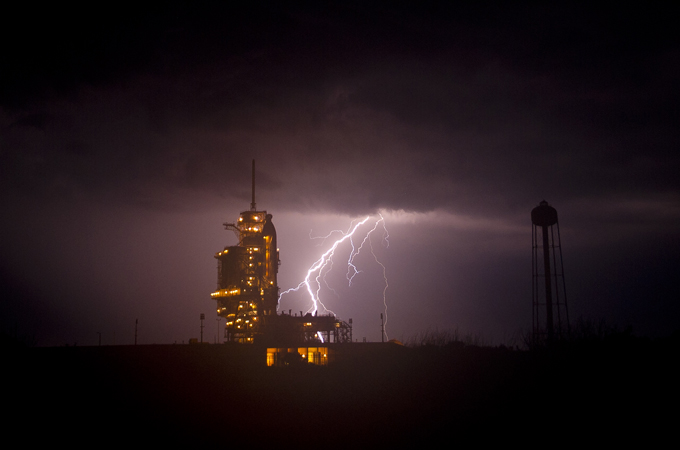The weather forecast for outer space
Weather conditions could extend Shuttle’s active service as thunderstorms threaten to postpone the launch.

 |
| NSA prepares for final launch of Space Shuttle [GettylGallo] |
The launch of the Atlantis Space Shuttle, scheduled for Friday, has attracted special attention as this will be its final such mission. But weather conditions could extend the Shuttle’s active service by a few days as thunderstorms threaten to postpone the launch.
The five Space Shuttles – Columbia, Challenger, Discovery, Atlantis and Endeavour – have flown more than 130 times, transported 350 people into space and covered around half a billion miles. They are the most complex aircraft ever built.
Keep reading
list of 4 itemsAfter the Hurricane
World’s coral reefs face global bleaching crisis
Why is Germany maintaining economic ties with China?
Yet despite, or probably because, of their complexity, they remain vulnerable to the weather conditions they experience whilst within the Earth’s atmosphere. The weather is the real wildcard in NASA’s meticulous planning that goes into ensuring a successful mission. So weather forecasts are an integral part of the process.
Mission forecasts are provided by the US Air Force Range Weather Operations Facility at Cape Canaveral in partnership with the NOAA National Weather Service Space Flight Meteorology Group. They provide detailed forecasts from three days ahead of launch. In the final 24 hours there is a schedule of briefings to the fuel tank loaders, the Launch Director, the astronauts (at launch – 3 hours and 55 minutes), the Flight Director, before a final launch briefing at launch – 35 minutes. There is even a final ‘go’ or ‘no go’ on weather at just 13 minutes before launch.
There are many weather elements which are of concern to the successful launch of the Shuttle, but here are some of the key ones:
Temperature: In order to safely load the highly flammable liquid oxygen fuel, the average air temperature must be in excess of 5 degrees Celsius and once fuelling has begun, the temperature must remain below 32 degree Celsius. Wind speed and humidity levels must also be taken into account when temperatures are towards the lower threshold.
Wind: Fuelling must also stop when the winds exceed 42 knots and for the launch to go ahead the wind must be less than 24 to 30 knots, depending on the wind direction. The wind also affects the recovery of the solid rocket booster which is jettisoned and retrieved soon after launch. Strong winds or high seas at the retrieval site will cause a postponement in the launch.
Winds in the upper atmosphere must also be within very strict criteria if the launch is to be given the go-ahead.
Precipitation: There must be no rain at, or near, the launch site.
Lightning: Possibly the greatest threat to the lives of the crew, any lightning within 10 miles of the launch site in the 30 minutes leading up to launch will result in immediate postponement. Similar criteria apply to tank fuelling.
Clouds: The cloud criteria are extremely complex but launches will not take place when there any cumulonimbus clouds in the vicinity, as it is from these clouds that lightning can occur. Thick layers of cloud, which may pose a risk of icing, are also avoided at all costs.
The above are just some of the conditions that must be met, so the threat to Friday’s launch should come as no surprise as a tropical disturbance in the Gulf of Mexico poses a potential shower, thick cloud, wind and lightning risk. The forecasts do suggest improving odds of a launch in the following two days.
Our familiarity with the shuttle missions over the last 20 years may cause us to take them for granted. But their contribution to scientific advancement through satellite launches and the construction of the International Space Station should really result in a sense of awe. In some small way, perhaps we should have similar respect for those who provide the highly specialised weather forecasts which play a part of every mission.